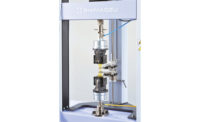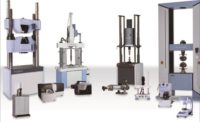Each application within the automotive manufacturing process requires a unique set of testing requirements.
It’s apparent every time you get behind the wheel, take a taxi or hail a car service. The automotive industry has an enormous impact on everyday life in the United States, and it continues to affect the lives of millions. The auto parts industry in the United States is estimated to be more than four million direct and indirect jobs, according to a study conducted by IHS Markit. Those jobs require unwavering attention to quality, and as the industry continues to evolve, the role of quality is as important as ever.
Electric vehicles, fuel cell vehicles, hybrid-electric vehicles, and plug-in hybrid vehicles are just a few of the options manufacturers are working on. With the revolution in artificial intelligence (AI), the Internet of Things, and next-generation automotive technologies, companies must have the right instruments for analyzing, testing and evaluating materials, parts and modules, as well as analyzing data from R&D to quality control.
Materials testing plays a key role in the automotive industry. Each application within the automotive manufacturing process requires a unique set of testing requirements, be it tensile testing a seat belt, strength testing a clutch, or improving the metal in a car body. And if any product defects do occur along the way, materials testing can be used to determine when and how this happened.
Materials Tests for Automotive Parts
Strength of materials is an important component of automotive safety. Because safety is critical, standards are in place to ensure material performance. Thus, when selecting materials, strength must be evaluated to satisfy the standards.
The material strength is largely determined by the composition in metal materials, though with polymers it depends on the type and density of the molecules used.
Therefore, a material composition analysis must be done to ensure the material strength is stable. In order to do this, product quality control staff conduct strength evaluations and composition analyses of raw materials used in automobiles, including metals, resins, and other raw materials. Tensile, compression, bending and hardness tests are used for strength evaluations. Evaluations of material composition requires inorganic element analysis and compound analysis. Along with acceptance inspections for materials from suppliers, manufacturers also analyze defects during the process and use the information for process improvement.
Testing static characteristics of springs, failure tests of parts, and strength evaluations of materials—including metals, plastics, rubbers, and films—is necessary. These may include acceptance inspections, evaluations of material, and tests to confirm changes in characteristics due to machining. Testing may be done in accordance with ISO, ASTM, and other standards.
Evaluating the car body, engine and suspension is a critical aspect of the testing process. Car doors and hoods are tested to evaluate the strength of the sheet metal used. Universal testing machines are used to measure the mechanical properties of new lighter weight, high strength alloys used in the production of car body panels and other components. Both fuel economy and safety are critical to manufacturers, so lightweight, high-strength materials are essential. In order to develop this strong type of sheet metal and perform quality control, tensile testing is must be done. Manufacturers are thus able to determine process-hardening coefficients (n values), rupture strength and elastic modulus.
Tensile testing is a workhorse of the automotive testing process. In addition to being used for the car body, it is also used to evaluate the O-rings, seat belts and seats. The breaking strength of seat belts is tested—obviously a critical aspect of automotive safety—as well as the foam rubber of a car seat. Car seats are also evaluated using compression testing. As drivers may spend a lot of time in their vehicles, comfort is no small matter. Developing a comfortable car seat takes place through identification of repulsive and restorative forces, then creating a database linked to actual subjective evaluations. Because of the size of the seats, a wide-design testing instrument is often required.
For manual transmissions, the engine and drive train are connected via the clutch at every change. As you might expect, the clutch functions hundreds or thousands of times during a drive, and requires optimal tuning. For high-output engines, the strength of engine/drive train connection must be sufficient to transmit engine power. Therefore, strength testing is implemented to evaluate clutch spring force. A machine with a variety of jigs, including compression plates for spring compression, and displacement measuring devices, can enable the measurement of even slight distortions.
Locating Defects
Product defects, when they do occur, require investigation of the cause of the defect, such as what damaged the part and how this occurred. In this situation, microscopic analyses, surface analyses and morphological observations are also performed. Strength evaluations are also performed on the materials in the defective parts in order to locate a cause from multiple perspectives. Other assessments would include evaluations of the processes leading to damage and problems via endurance evaluations, as well as strength evaluations under simulated use conditions, and failure tests of actual products and parts.
Regardless of the vehicle being manufactured, the automotive industry requires high levels of safety and reliability. Reducing the environmental impact, improving efficiency, and saving energy are also important factors in the process. Every time you get into a vehicle, know that materials testing made the journey possible.




